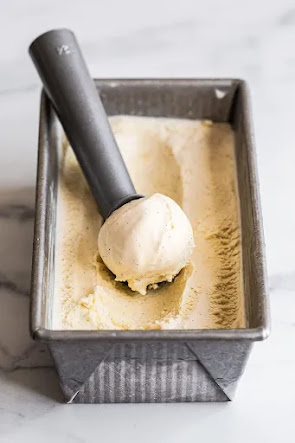Ingredients
- 1 1/2 cups whole milk
- 1 1/2 cups heavy cream
- 3/4 cup (150 grams) granulated sugar, divided
- 1/4 teaspoon salt
- 1 vanilla bean, split in half lengthwise and seeded
- 4 large egg yolks
Instructions
Prepare the ice bath:
- Fill a large bowl with ice cubes and a cup or two of water. Place a medium bowl fitted with a fine strainer inside ice bath. Set aside.
Begin the custard base:
- In a medium saucepan combine the milk, cream, 1/2 cup (100 grams) of the sugar, salt, vanilla seeds and vanilla pod. Set over medium heat, stirring occasionally, until the mixture is warm and begins to steam, about 5 minutes.
Temper the eggs:
- In a medium bowl, whisk together the egg yolks and the remaining 1/4 cup (50 grams) of sugar until very well combined and lightened in color. Carefully and slowly ladle half of the warm milk mixture into the egg yolks, whisking constantly, until the egg mixture is gently warmed. Slowly whisk the egg-milk mixture back into the saucepan.
Cook the custard:
- Cook over medium heat, stirring constantly with a wooden spoon, until thick enough to coat the back of the spoon and registers around 175°F on an instant-read thermometer, about 5 to 7 minutes. Be careful not to boil the mixture.
Chill the custard:
- Immediately strain the mixture through the fine strainer into the prepared ice bath. Discard the vanilla bean pod. Cool the custard in the ice bath until it’s at room temperature, stirring often. Press plastic wrap against the surface of the custard and refrigerate until chilled, about 4 hours or up to 1 day.
Churn the custard:
- Pour the chilled mixture into an ice cream maker and freeze according to the manufacturer’s directions. Place in an airtight container. Cover the ice cream surface with plastic wrap before placing the lid on. Freeze until the ice cream is firm and flavor is ripened, at least 2 hours.
- If the ice cream has been in the freezer for more than a couple days, it’ll need to soften before scooping and serving. Allow it to sit in the fridge for 30 minutes before scooping for best results.

Comments
Post a Comment